ADATA XPG Gammix S70 1TB Performance Testing
We test using both the default smaller test size as well as larger test sets on our benchmarks. This allows us to see the difference between lighter and heavier workloads.
CrystalDiskMark x64
CrystalDiskMark is used as a basic starting point for benchmarks as it is something commonly run by end-users as a sanity check.
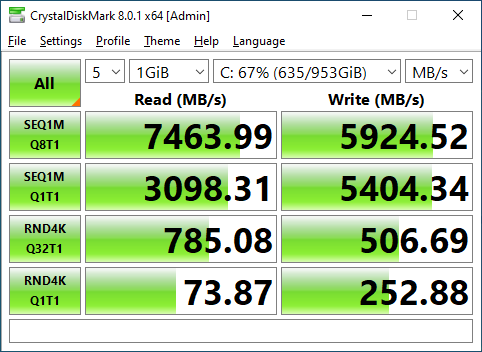
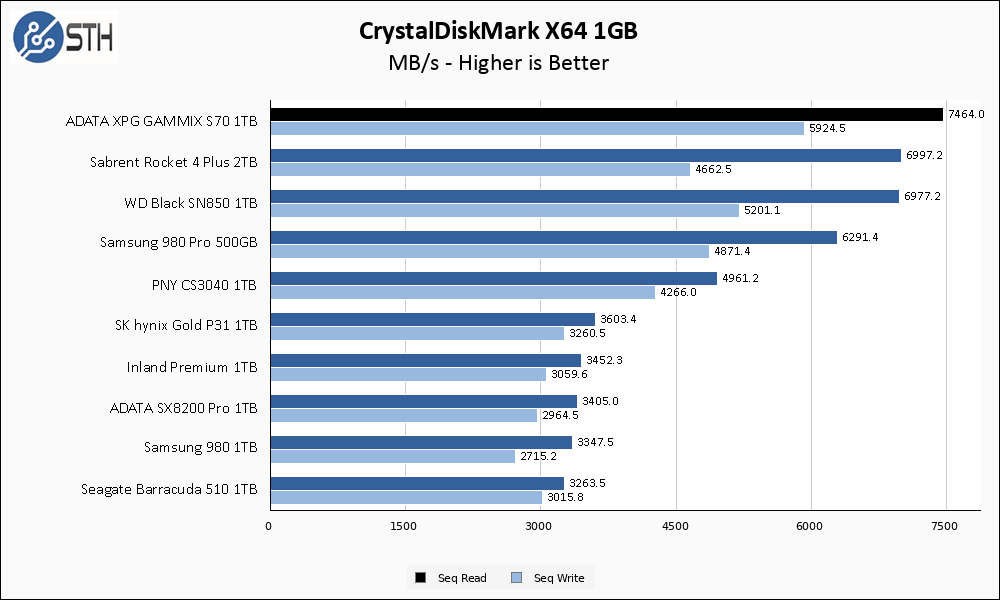
Hot off the starting line, the XPG Gammix S70 1TB pulls into the top spot among my stable of PCIe 4.0 SSDs. Class-leading sequential numbers for both read and write let the S70 sit comfortably at the top.
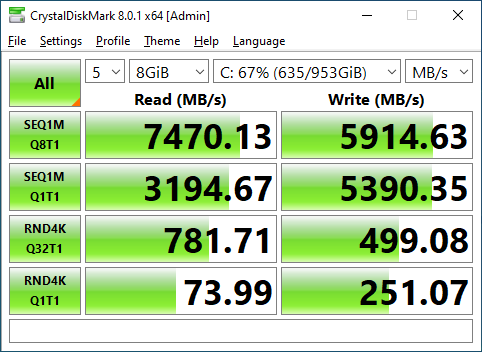
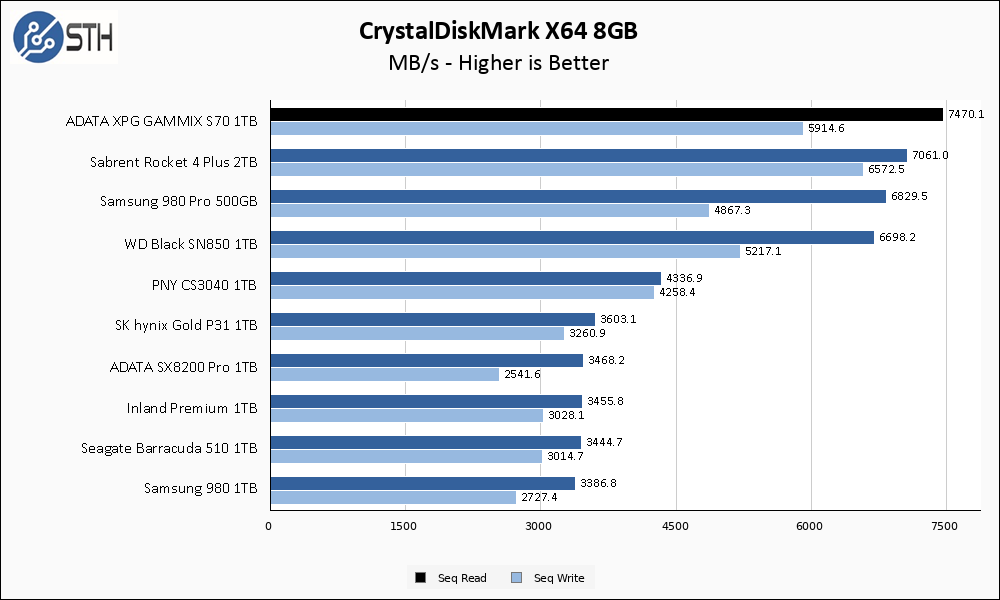
The larger CrystalDiskMark has almost no impact on the S70, however, the Sabrent Rocket 4 Plus we previously tested gained write performance relative to the smaller test preventing a clean sweep of CrystalDiskMark for the S70. With that said, keep in mind the Rocket 4 Plus we tested was a 2TB model, giving it an advantage over the 1TB S70. Regardless, this represents excellent sequential results from the S70.
ATTO Disk Benchmark
The ATTO Disk Benchmark has been a staple of drive sequential performance testing for years. ATTO was tested at both 256MB and 8GB file sizes.
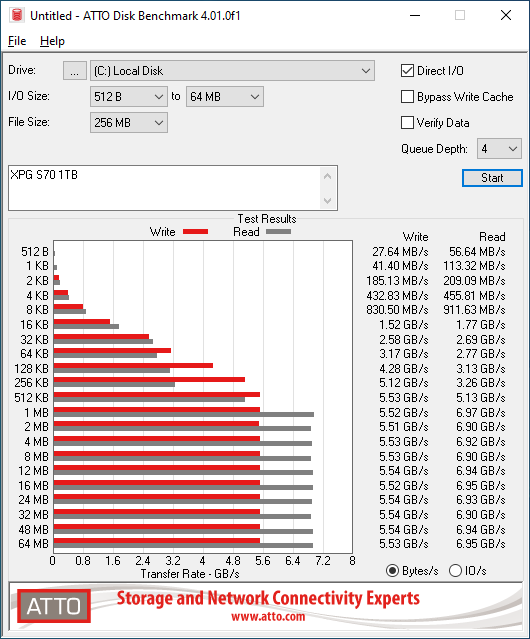
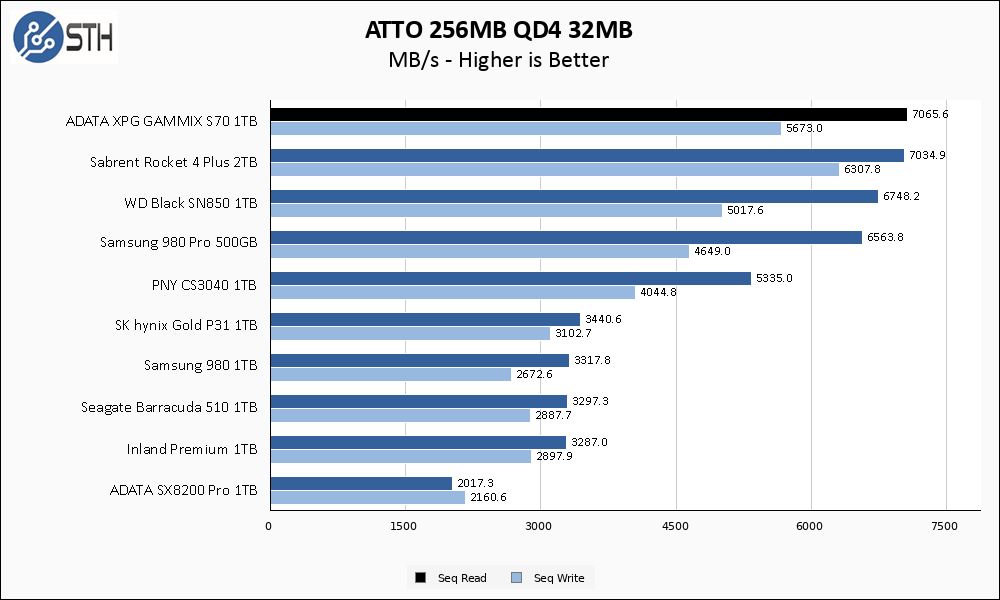
Once again the ADATA XPG Gammix S70 1TB finds itself at the top of our chart. This time it barely edges out the Sabrent in read speed but loses by a bit in write speed to the larger drive. More importantly, ATTO was the benchmark that ADATA used when quoting the 7400 MB/s read and 5500 MB/s write numbers, and despite topping our chart they slightly missed the mark in read speed. I will not hold it against them much though since they got there in CrystalDiskMark.
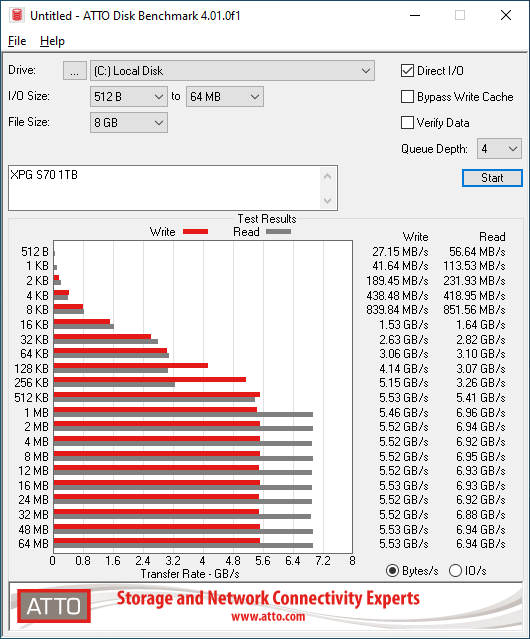
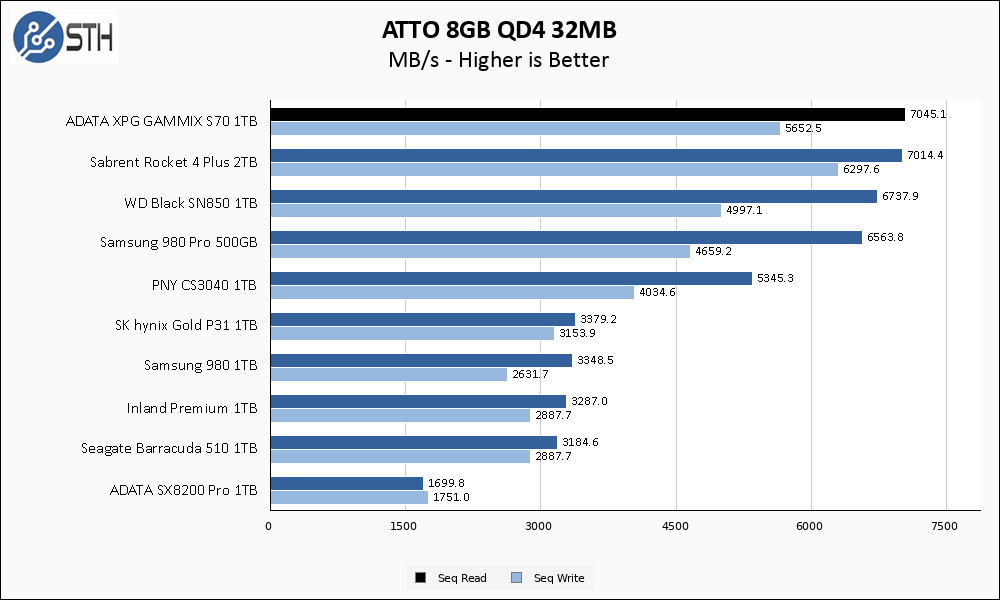
Performance in the larger ATTO test is unchanged from the smaller variant. In a word, the performance of the S70 is excellent.
Anvil’s Storage Utilities
Anvil’s Storage Utilities is a comprehensive benchmark that gives us a very in-depth look at the performance of drives tested. This benchmark was run with both a 1GB and 8GB test size.
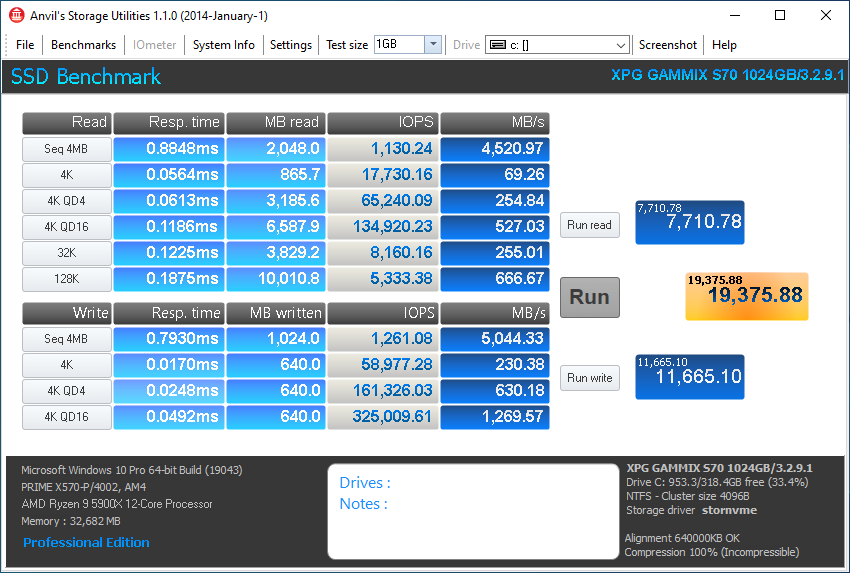
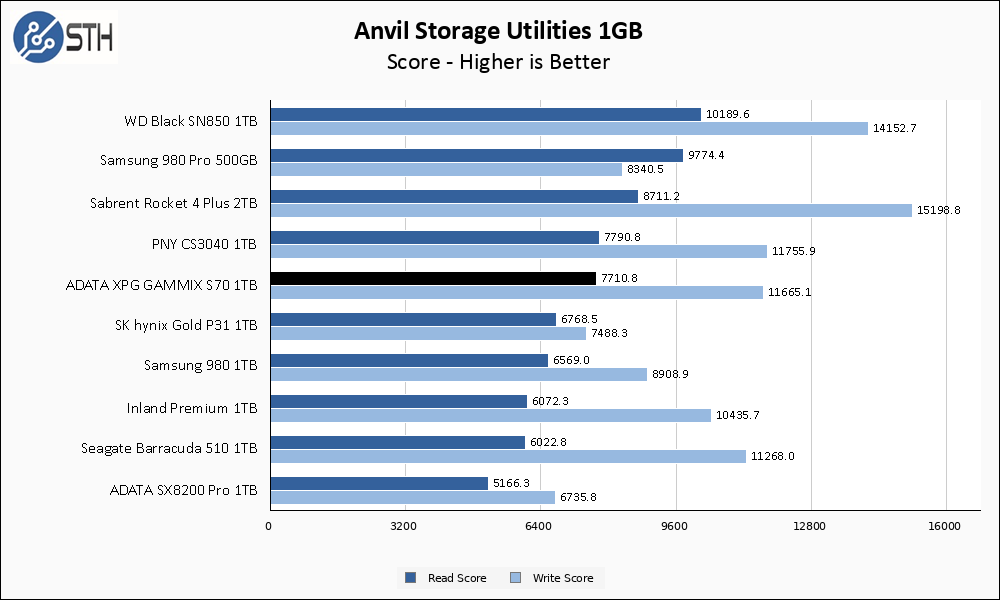
Anvil represents the S70’s ‘fall from grace’ landing it closer to the bottom of the PCIe 4.0 pack. With that said, these results are still respectable and I see no major problems here.
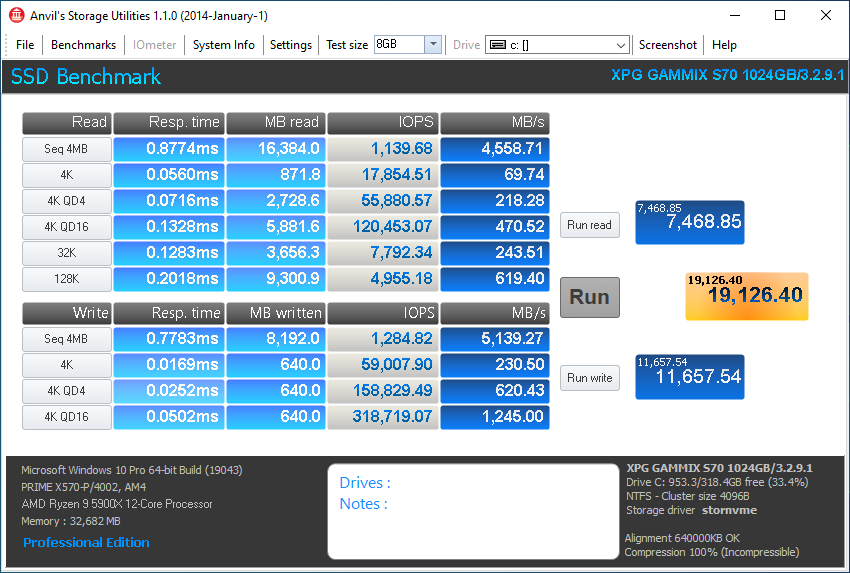
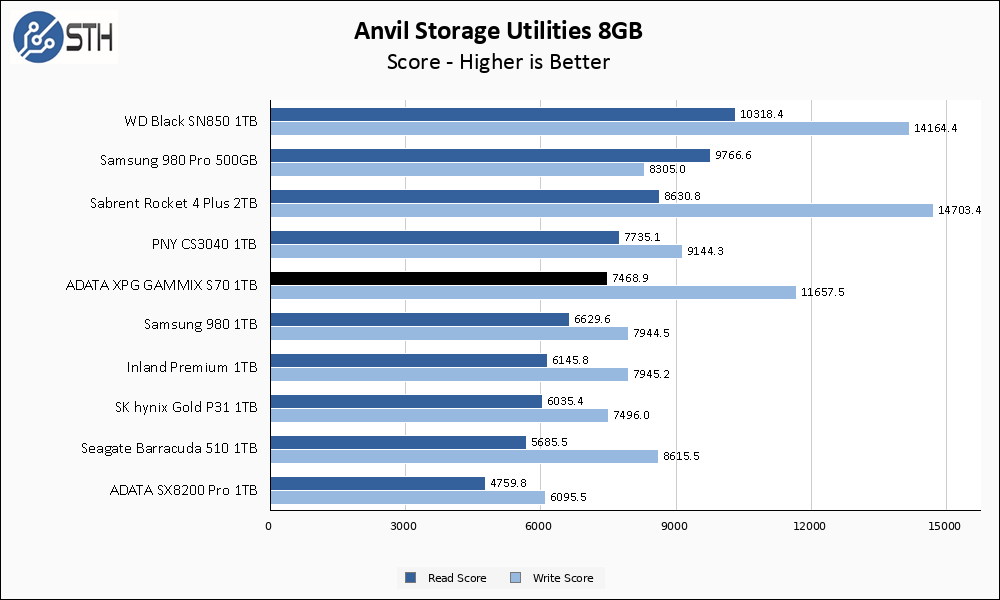
The larger Anvil allows the S70 to showcase its stability, with results holding incredibly close to the smaller test. In particular, the write score allows the S70 to move back into the middle of the PCIe 4.0 pack, though the read score still has it trailing the other PCIe 4.0 drives.
AS SSD Benchmark
AS SSD Benchmark is another good benchmark for testing SSDs. We run all three tests for our series. Like other utilities, it was run with both the default 1GB as well as a larger 10GB test set.
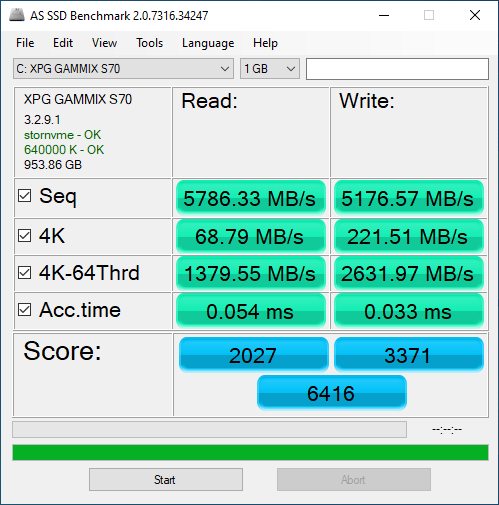
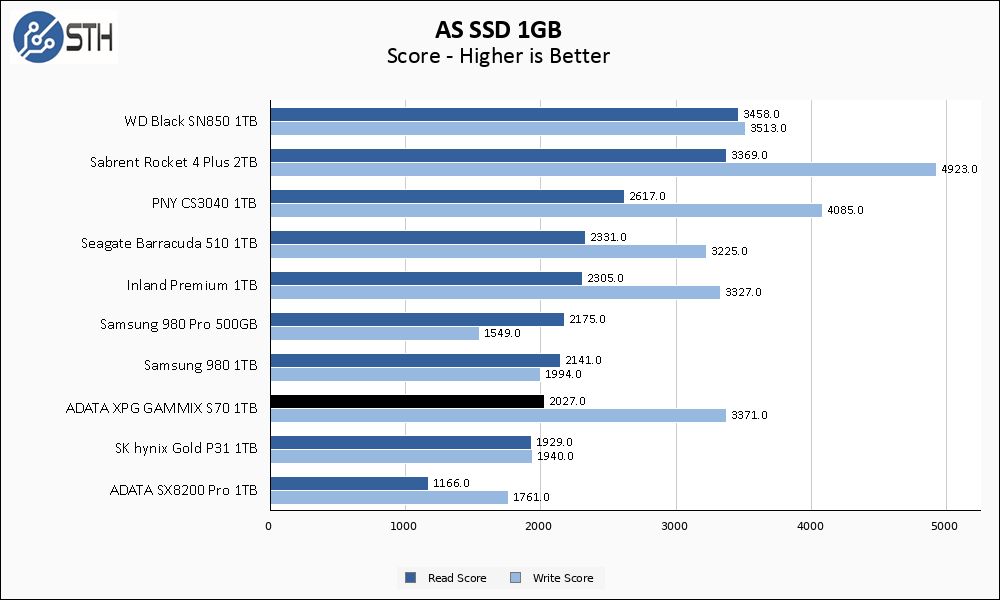
AS SSD is not particularly kind to the ADATA XPG Gammix S70 1TB, which now finds itself in the company of PCIe 3.0 drives rather than 4.0 drives. The results are not terrible, they just do not stand out as the drive has done in previous benchmarks.
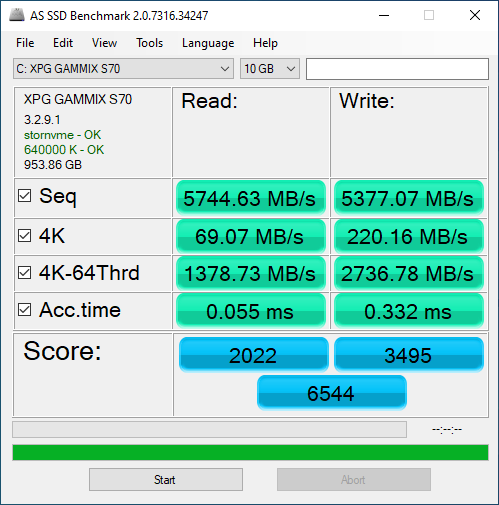
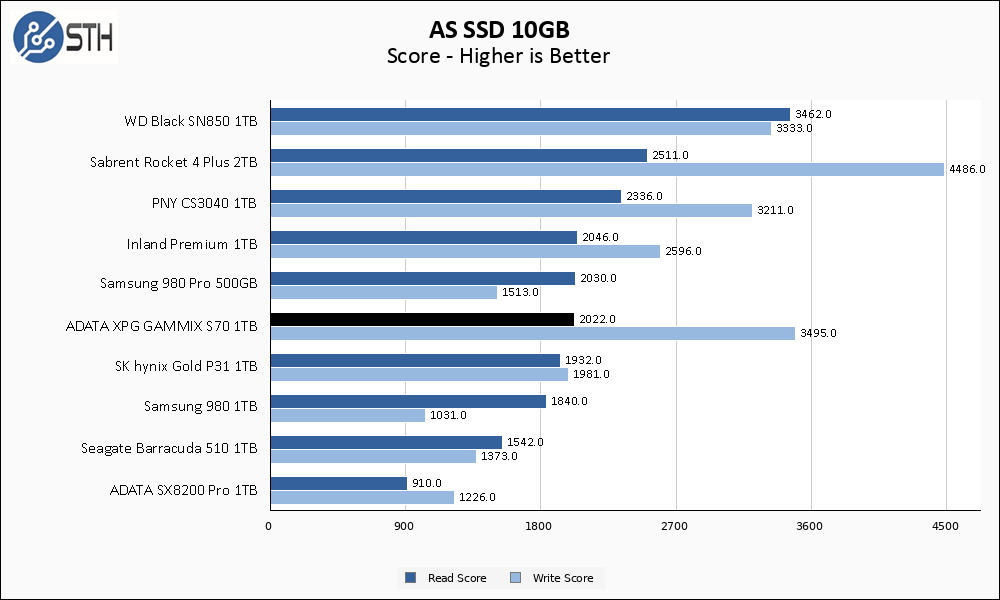
Moving to the larger test, the S70 again shows its stability, this time by actually increasing the score versus the smaller test. Performing better on the larger version of AS SSD is a rare feat, and most of the other drives on our list lose at least a few points. Still, it is not quite enough to restore the S70 to the top half of our graph for read score, though it comes in a very respectable 2nd place for write performance.
SPECworkstation, thermals, and our conclusion are up next.




SSD with a non removable heatsink from a company infamous for switching controllers and NAND is going to be a hard pass. Wouldn’t put it past them to send high performing cherry picked models to reviewers and down the line shafting consumers with more inferior variants.
David,
ADATA did not provide this SSD, it was purchased at retail.
Hi Will, thanks for this review. I had one of these. The m.2 slot on my board was located between PCIe slot 1 and the CPU, so not the worst airflow in the case. Still I had to set a 40mm fan to blow air over it, nvme tool reported it hitting 70C when in heavy read use. These things run insanely hot. The performance was very good though and the price was good.
My understanding is 5500MB/s translates to 740TB every 37.4 hours. When a vendor makes a particularly high claim for drive endurance, is this only for the warranty, or does the drive really handle that write load?
In the name of trust but verify, I think it would be useful as a test to spend the total endurance rating, set the drive on the shelf for a week and then check if all the data is still there from the last write.
Eric,
If you write continuously to the drive, write speed drops to 640 MB/s or so as shown in my testing. At that rate, it would take 14 days of continuous writing just to reach the rated 740 TB endurance rating, which is impractical for my review purposes.
With that said, endurance rating primarily serves as a warranty device. It’s like a car mileage warranty – 10 years or 100000 miles whichever comes first. Your SSD is the same, 5 years or 740TB whichever comes first.
“Samsung Rocket 4 Plus” you say? I want one!
@Will – i’m a bit with David on this one. Not that you shouldn’t test it, but Adata has been caught redhanded with altering production to inferior components after the first batches and NOT altering SKU’s or anything else. As shown by Linus Tech Tips who got hold of a whole bunch of them from different batches.
So although the performance is great on this particular unit (i have a gammix unit myself and one of the SX8200 pro’s from the older batches) There is unfortunately no possible way to be certain that during production lifetime, this will hold up. Unless Adata becomes a lot more transperant on why they did this and shows some commitment that they won’t do it again. So the article should be taken with the precaution that that was the initial stage, and there may be problems down the road.)
Claus,
I’m fully aware that ADATA has swapped components on their drives in the past; I was one of the first reviewers to take note of a component swap (the controller) back when I reviewed the SX8200 Pro.
With that said, while I generally disagree with the idea of swapping components without releasing a new SKU, for ADATA at least they do not seem to be cherry picking nor front-loading their drives that they send to reviewers; the SX8200 Pro I reviewed and noted had an inferior controller was provided by ADATA themselves. In addition, nowhere in any of their marketing materials do they guarantee a specific controller or NAND; instead they guarantee a performance rating (so many MB/s). Basically they set their own bar fairly low, so they can easily pass it.
I’m not saying it excuses the behavior; I would still much prefer drives with different components have different SKUs. However, for me all of that moves the dial when it comes to whether I assign a malicious or deceptive motivation to the practice. If ADATA had sent me one of the highest performance variants of the 8200 Pro, or dodged my question when I pointed out the controller change, then my attitude towards them would be very different.
I have an s70 1tb I just purchased from B&H with the latest firmware revision. My CrystalDiskMark scores are closer to 5600/3800, and my ATTO scores are closer to 6.1/3.6. That’s a massive discrepancy from your numbers and what the drive is advertised to be able to do, and I didn’t realize they’d been caught with a bait and switch till after I purchsed and started trying to troubleshoot why my drive performance was so bad. Now, I’m still troubleshooting, but I’m pretty sure I’m going to have to return this drive because it’s essentially faulty since the reason I bought it was for the performance. The controller on mine is Inogrit Rainier 5236CAA, supposedly a fine controller, but the DRAM looks generic af, as does the actual NAND, which has little to no discernable labeling on it. This suggests that I’ve been screwed by ADATA, like thousands of other people.
So, should I buy one or not? If it’s a numbers game, and I have to play if I buy from Adata, what are the chances of getting what I think I’m paying for? Was this just a bad decision by some bureaucrat who’s since been fired or do they really not care if people take them seriously or not?